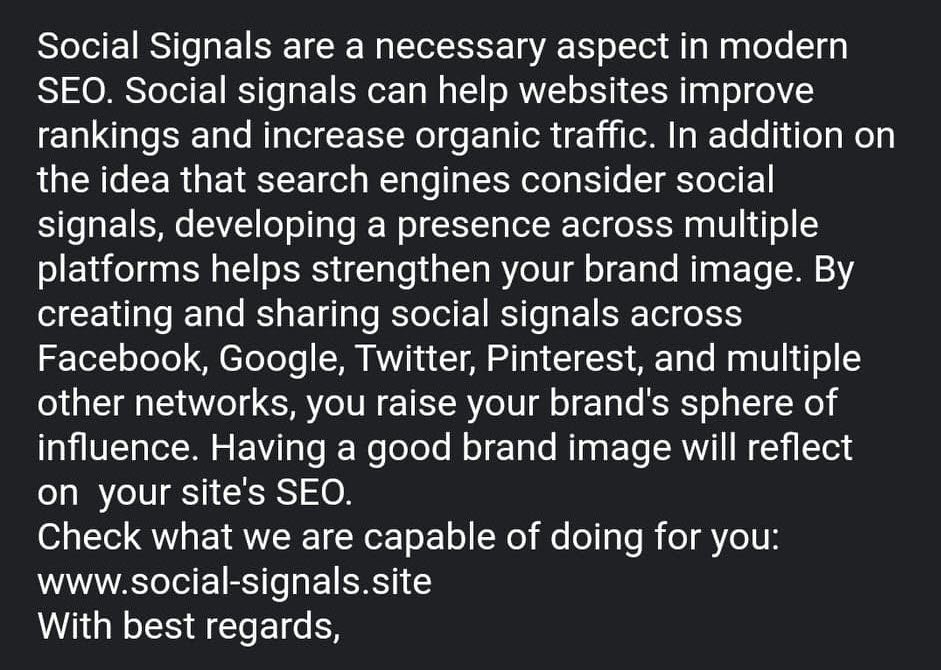Alright, rant time. One of my clients received this email yesterday, and I have a few bones to pick.
Social Signals != Direct Ranking Factor
Search engines do not “consider social signals.” Matt Cutts has said that social signals are not a direct ranking factor. That said, good content that’s shared on social media can get more traffic (and therefore show search engines that this content is more relevant / popular. This (along with the relevant content that you put out on your site) can drive more traffic to your site.
Hang Out Where Your People Are
Instead of “strengthening your brand image across multiple platforms,” I recommend hanging out where your target audience is. Don’t spread yourself too thin, as different platforms have different post formatting requirements. The days of cross-posting the same thing to Facebook, Twitter, Instagram, et al are long gone.
Answer Their Questions
Sharing across social media won’t necessarily improve your brand image. In order to get noticed, you need to put out valuable content that answers users’ questions. Most of the time, people are asking about the following:
- Cost and pricing
- Comparisons
- Problems (theirs and yours)
- Best of lists (best in class, best practices)
- Reviews
Each of these topics can be turned into multiple pieces of content, including videos, written blogs, podcasts, and social media posts. THAT, my friends, is how you get more traffic — by answering users’ questions, and building trust by doing so.
Build A Strong Brand
There’s a lot more that goes into “strengthening your brand image” than posting on social. Aspects such as a comprehensive logo, colors, brand personality, knowledge of your target audience, etc. also play a part.
Speak To Your Target Audience
Speaking of your target audience, the answers you put out to the questions listed above will help to attract the right kind of people, who will then be more likely to convert (read: purchase your product or service). Ultimately, we’re all selling something, right? Traffic ain’t worth jack if it doesn’t convert. In fact, if too many of the wrong people come to your site and immediately bounce, that could hurt your position in search engine rankings. No one wants that!
Analyze Their Actions
Also consider the actions people take on the different platforms. For example, Facebook is for connecting with people, while LinkedIn is more focused on B2B connections. Instagram is heavily visual in nature, and doesn’t allow links in individual posts. This makes driving traffic to your website more difficult.
Avoid External Links
Furthermore, some platforms (such as Facebook) can restrict your post if it includes a link to an external site. Think of it this way: Facebook wants to keep you on their platform as long as possible so that they can serve you more ads. If you navigate off of their platform, they lose potential ad revenue.
TL;DR: Don’t rely on social media posts to drive a whole lot of traffic or conversions to your website. Put out content that answers questions that your users have, and take the time to build quality relationships.
To get started, take one question from the list above, answer it in one sentence, then put it out there. Do this consistently over a month, and watch what happens. 🙂


Recent Comments